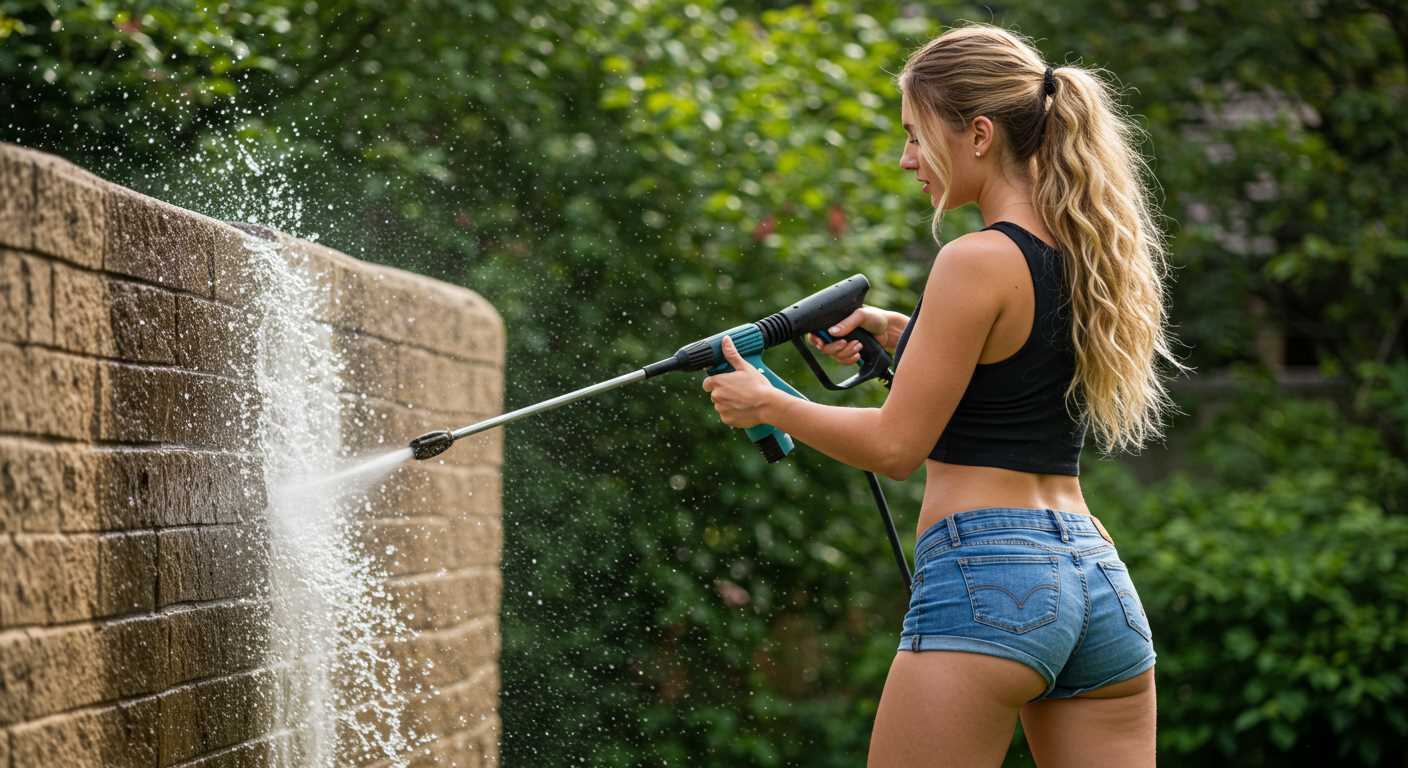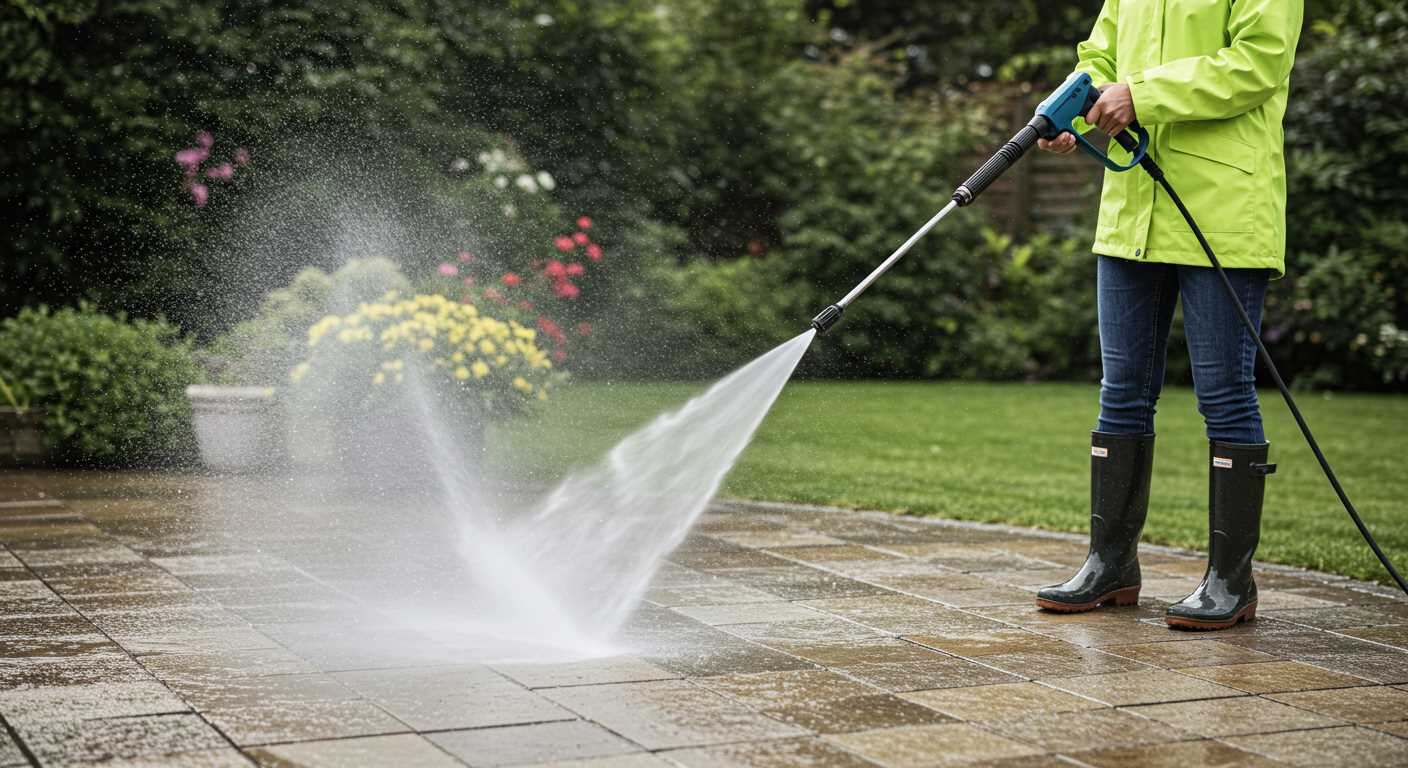



.jpg)
To start using your Kärcher equipment effectively, ensure you have the right fittings ready. The typical garden tap is usually a straightforward connection point. If you have a standard ¾-inch outlet, a quick-release connector is often the best choice. This allows for easy attachment and detachment without fuss.
In my experience, ensure the rubber washer is in place within the connector. This small detail can prevent leaks that often lead to frustrating interruptions while you’re cleaning. I’ve learned the hard way that a slow drip can turn into a bigger issue, so it’s worth double-checking.
Once you’ve secured the connector to the tap, extend the flexible tubing towards the Kärcher device. Make sure there are no kinks or twists in the line, as these can impact water flow. I remember one instance where a slight bend in the line caused a drop in pressure and made the job take much longer than necessary. Always keep it straight for optimal performance.
After attaching the other end to the Kärcher unit, tighten the fitting by hand. It doesn’t need to be overly tight, just snug enough to create a good seal. I find that using pliers can sometimes lead to over-tightening, which can damage the fittings. Trust me, that’s a mistake you want to avoid.
Lastly, turn on the water supply slowly. This gradual approach allows you to check for leaks before fully engaging the machine. I often take a moment to observe the connections. If all is well, you’re ready to begin the cleaning task ahead.
Connecting Water Supply to Your Cleaning Unit
Ensure the water source is free from debris before beginning. Attach the end of your supply line to the inlet on the machine. A quick-release connector simplifies this step, allowing for a snug fit without leaks. If you’re drawing from a non-standard water source, check compatibility with your unit’s specifications to avoid any mishaps.
Checking for Leaks
Once secured, turn on the water and inspect all connections for leaks. A small drip can lead to significant issues later, including reduced performance. If you discover any leaks, tighten the fittings or use plumber’s tape for added security. Regular checks save time and ensure consistent operation.
Using Alternative Water Sources
If you lack an outdoor tap, consider options like a water butt or a large container. Just remember, the intake should always be submerged to prevent air intake, which could cause the machine to malfunction. For more information on selecting a suitable unit for your needs, check this pressure washer without an outside tap guide.
Choosing the Right Hose Pipe for Your Karcher Model
Start with the length. A 10-metre length suits most residential tasks, allowing flexibility without excessive tangling. For larger areas, opt for 15 metres. Remember, longer lengths can reduce water pressure, so it’s a balance.
Next, consider the diameter. A 1/4 inch (6.35 mm) diameter is standard for compact models, while 3/8 inch (9.53 mm) is preferred for more powerful units. This ensures optimal water flow and performance.
Material matters. Look for reinforced materials that resist kinks and abrasions. Rubber hoses are durable, while PVC options are lightweight and flexible. Both can work well, but rubber often lasts longer in tough environments.
Compatibility is key. Always check the specifications for your device. Many models have unique fittings, so ensure the end connectors match your equipment. Some may require adapters, which can be easily sourced online or at hardware stores.
Here’s a quick reference table for different Karcher models:
| Model | Recommended Length | Diameter | Material Type |
|---|---|---|---|
| K2 Compact | 10 metres | 1/4 inch | Rubber |
| K4 Full Control | 15 metres | 3/8 inch | PVC |
| K5 Premium | 15 metres | 3/8 inch | Rubber |
Finally, consider the pressure rating. Ensure your chosen accessory can handle the maximum output of your machine–check for ratings of at least 130 bar for residential use. Investing in quality now saves hassle later when you need reliability in your cleaning tasks.
Preparing the Equipment for Hose Attachment
Before you begin attaching your water delivery system to the machine, ensure the unit is turned off and unplugged. This simple step can prevent any accidental activation while you work.
Check Water Supply
- Ensure the water source is readily available and the tap is in good working order.
- Run the water for a few seconds to eliminate any debris or air, ensuring a steady flow.
Inspect the Inlet
- Examine the inlet connector on the device. Look for any signs of wear or damage.
- Clean the inlet area with a damp cloth to remove dirt or grime that may hinder a proper seal.
Make sure to have the appropriate fittings and adapters on hand. Each model may require specific connectors, so refer to the manual if unsure. This ensures a tight fit and prevents leaks during operation.
Finally, double-check that all components are dry before proceeding with the attachment. Moisture can cause issues with electrical connections and performance.
Connecting the Hose Pipe Securely to the Washer
Align the fitting of the water supply with the inlet of the unit. You’ll want to feel that satisfying click or hear a slight snap as the connection is made. This indicates that everything is seated properly. If it feels loose or wobbly, it could lead to leaks or reduced performance. Take a moment to double-check; a tight fit can save you from frustration later.
It’s wise to inspect the O-ring on the connector before attaching. A damaged or worn O-ring can cause leaks that might disrupt your cleaning tasks. If you notice any cracks or deformation, replacing it is a quick fix that will enhance the overall functionality of your equipment.
After securing the connection, turn on the water supply to check for any leaks. A slow drip may not seem like a big deal, but it can compromise the entire operation. If you spot any issues, disconnect and reattach, ensuring that everything is aligned correctly. Trust me, a little diligence here pays off in the long run.
Once the connection is secure, it’s beneficial to run the unit briefly without the nozzle attached. This allows air to escape and ensures that the system is primed for action. Listen for any unusual sounds; if something seems off, it’s better to investigate before diving into your cleaning tasks.
Testing for Leaks After Hose Connection
After securing the attachment, it’s crucial to check for any leaks. A simple yet effective method involves running the machine at a low setting for a few moments. Carefully observe the connections for any signs of water escaping. If you notice any drips or sprays, it indicates an inadequate seal.
Using a towel can help in identifying leaks more clearly. Place it around the joint and watch for wet spots. If water seeps through, it’s time to tighten the fittings. Sometimes, using plumber’s tape on the threads can enhance the seal if the issue persists.
In my experience, I’ve encountered instances where a slight misalignment of the connection led to leaks. Ensuring everything is perfectly aligned before tightening can prevent this hassle. If the problem continues, inspecting the rubber washers for wear or damage is wise, as they often play a critical role in ensuring a tight fit.
Once you’ve confirmed there are no leaks, take a moment to check the entire length of the tubing for any signs of wear or pinholes. It’s better to catch these issues early before they escalate during your cleaning tasks. Remember, a well-sealed system not only enhances performance but also prolongs the lifespan of your equipment.
Maintaining the Hose and Pressure Washer for Longevity
Regular upkeep of your cleaning equipment can significantly extend its lifespan. First, always store the tubing properly. Avoid sharp bends or kinks; this can cause wear and tear over time. After each use, fully drain any remaining water to prevent internal degradation and blockages. I’ve seen hoses that were left filled, leading to mould and mildew, which can ruin the material.
Inspect the connectors and fittings regularly. Look for signs of wear or damage. When I worked with various models, I often found that a small crack in a fitting could lead to a larger issue down the line. Replace any damaged components immediately to prevent further complications.
Cleaning the filters is just as crucial. A clogged filter can affect performance. I used to set a reminder to check the filters after every few uses. It’s a small task that saves a lot of hassle later on. If you notice reduced water flow, it’s a clear sign that it’s time to give those filters some attention.
Additionally, consider using a protective cover for your equipment when not in use. This simple step can shield your gear from dust and debris, enhancing durability. I’ve always found that a little prevention goes a long way. For instance, after a long day of cleaning, I’d cover my tools immediately to keep them in top shape.
Lastly, don’t forget about the maintenance of the machine itself. Regular servicing according to the manufacturer’s guidelines ensures that everything runs smoothly. Keeping an eye on the motor and pump will help you catch any issues before they become major problems. If you’re looking for cleaning tips beyond just your equipment, check out this resource on how to clean laminate floors tips and tricks for spotless flooring. It’s all about maintaining your tools and the surfaces you’re working with for the best results!

.jpg)



.jpg)


